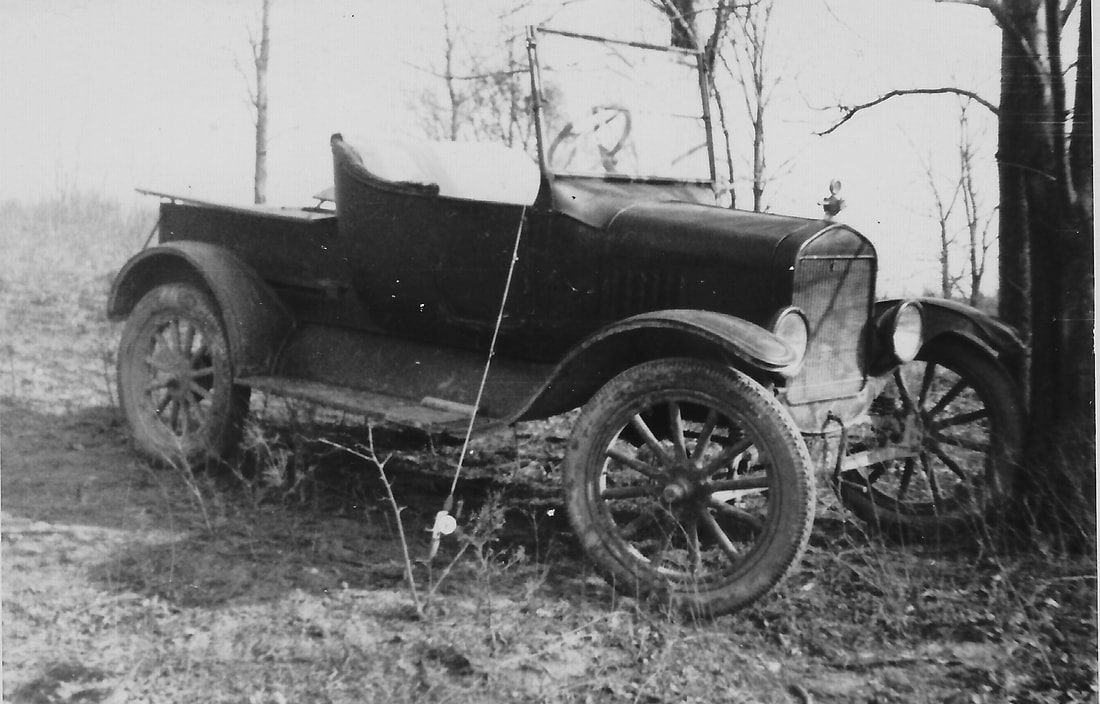 Pud’s ever-faithful 1925 Model T pickup, Thomas, prior to its violent demise on the night of August 22, 1942. Note the fishing pole leaning against the door. Pud’s ever-faithful 1925 Model T pickup, Thomas, prior to its violent demise on the night of August 22, 1942. Note the fishing pole leaning against the door. David Hoefer, of Louisville, Ky., is co-editor of The Last Resort and the author of the book's Introduction. If you would like to share your thoughts on Clearing the Fog, contact us here. Some knock midcentury America for its supposed philistinism—remember, we’re talking about the generation that survived the Great Depression and would go on to win World War II, create history’s mightiest economy, and put men on the moon. Is being expert in the consumption of esoteric culture really a laudable achievement? That said, there is a somewhat naïve, but also affective, quality to the camp journal in The Last Resort. This comes across in the relationship Pud Goodlett has with the two great loves he references, neither of which at age 19 was a young woman. I’m referring to Mike, his dog, and to Thomas, his 1925 Ford Model T pickup. It’s Thomas that helps put to rest the notion of a sophistication deficit as a defining characteristic of the pre-war population. The Ford Model T was, of course, one of the signal success stories of American business. Henry Ford didn’t invent assembly-line production or standardized machine parts, but he was the first automobile manufacturer to wed mass-production techniques to design and marketing concepts. Just as importantly, his was a car for the middle rather than the upper classes, both domestically and abroad. In production from 1908 to 1927, the Model T ultimately recorded sales of 16.5 million units. This explosion in low-cost but relatively fast transportation, with top speeds of 45 mph, had enormous impacts on American society, some good, some not so good. Automobile owners found themselves with the means to escape the intellectual isolation of a small town, but in the process they stumbled into the psychological isolation of an even smaller car—perhaps a busier version of loneliness. But automobiles—and automobility—can foster values and virtues as well. As the philosopher Loren Lomasky has argued, freedom of movement, as aided by the triumph of horsepower over horses, can be important to the pursuit of life-projects: “Movement, therefore, does not simply describe getting from here to there; it has normative richness. To move is to progress—though, of course, it can also be to backslide. Only stasis is morally neutral, and ours is a dynamic universe. The greater the variety of dimensions through which an individual transforms itself and things it encounters, the greater the scope for evaluative concerns. The grounds on which human beings appraise themselves and their fellows will be much richer than, say, the standards applied to horses or bottles of wine or the performance of machines. For people, there is not only a better or worse but a chosen better or worse toward which we deliberately direct ourselves. Intelligent automobility is crucial to the elevated status of human beings vis-à-vis other beings.” (Lomasky, Loren E. “Autonomy and Automobility.” The Independent Review, Vol. II, No. 1, Summer 1997, pp. 5-28.) I suspect that Thomas was important in exactly this manner—he gave Pud the gift of automobility, of independent pursuit. He added to the richness of Pud’s experiences and pointed toward new vistas along the muddy, rutted roads of Anderson County. Beyond these, at much further distances, were the vistas that Pud eventually chose or had chosen for him: war under Patton in Europe, marriage to Mary Marrs, Harvard and Harvard Forest, teaching and scholarship at Johns Hopkins. There was nothing of the bumpkin in any of this. Thomas’s end was opera buffa slapstick if not exactly funny, demolished by moonlight on August 22, 1942, when striking another vehicle on the way to Camp Last Resort. Neither car had its headlights on, a common power-saving trick in those days. The personal injuries weren’t life-threatening, but poor old Thomas was a twisted wreck, shortly to be replaced by Pud’s second car, Westbrook, a 1934 Chevy. Like Moses, Thomas never entered the Promised Land, always waiting patiently for Pud at the head of the final footpath the boys took to camp. Here at least Mike the dog, who followed his master everywhere, had a singular advantage over the intrepid but less sure-footed Thomas. Here’s a nicely done five-minute video clip about the Ford Model T, courtesy CarDataVideo’s YouTube channel.
0 Comments
Your comment will be posted after it is approved.
Leave a Reply. |
Details
Archives
June 2023
Categories
All
|


 RSS Feed
RSS Feed